In 2012, European scientists discovered a carnivorous microalgae species in the waters of Denmark that can paralyze other organisms by releasing a large amount of toxins into the water. Simultaneously, they can also prey on larger fish. There was a time when coastal residents of Northern Europe were hesitant to venture out to sea, and fishermen had to wear special waterproof clothing just to go fishing because of this microalgae.
However, for the residents of Læsø Island in Denmark, they have been consuming algae since childhood and have yet to find any species that frightens them. While most people refrain from going out to sea, they are the only ones who return to the shores to collect seaweed and other types of algae.
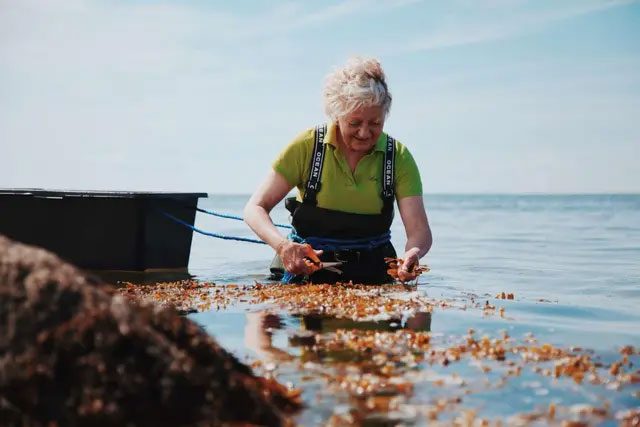
Residents harvesting seaweed.
Vallin, a native Dane, stated: “This is the best food in the world, rich in alginic acid, vitamins, and protein.” “Most Northern Europeans in the past did not eat seaweed because it was bitter and pungent, but during the Black Death and the Thirty Years’ War, fishermen living along the Danish coast survived by consuming all kinds of these seaweeds.”
Vallin’s mother, a native fisherman from the North Sea, said she went fishing with her father when she was just seven years old. Later, her father passed away during World War II, and the family moved to Læsø Island, where they never left.

Seaweed has significant effects on leukemia and various ulcer symptoms.
Læsø Island is located about 15 kilometers from the Danish mainland, covering an area of 101 square kilometers and home to fewer than 1,800 residents, making it the municipality with the lowest population density in Northern Europe.
Læsø Island is renowned in Europe for being one of the largest exporters of seaweed. Besides fishing, locals spend their remaining time collecting naturally dried seaweeds. It is said that besides its antioxidant properties, seaweed also has significant effects on leukemia and various ulcer symptoms.
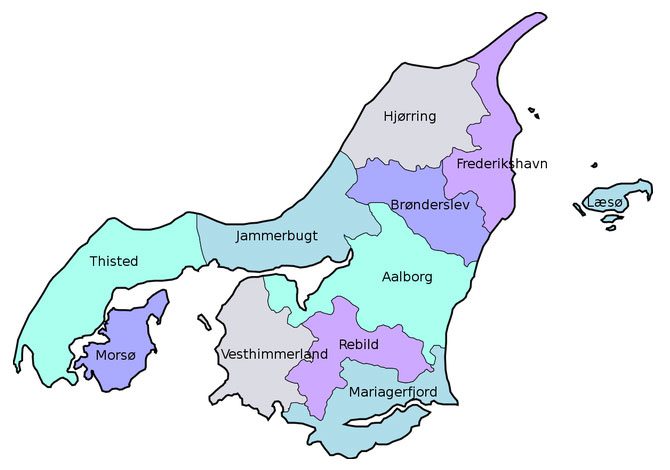
Location of Læsø Island.
What truly attracts people to this island is the dozens of seaweed houses with a history of over 300 years. In 2012, UNESCO sent experts to survey these structures and concluded: “These seaweed houses have a long history, dating back about 300-350 years, with a layer of seaweed on the roof thicker than one meter, weighing between 35-40 tons in total.”
Although the seaweed houses are not listed as World Heritage Sites, experts still highly regard their “uniqueness.” Ordinary reinforced concrete roofs typically last only 50-80 years, while seaweed roofs can last many times longer.
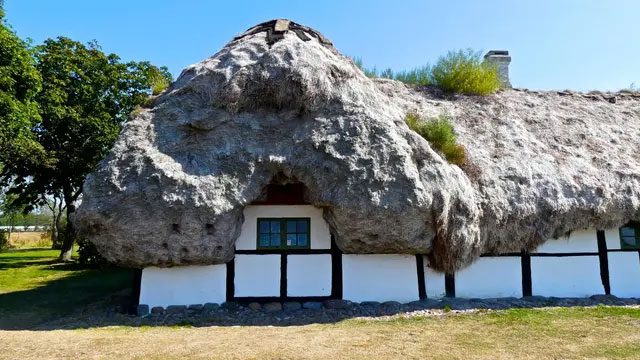
Roof material made from seaweed.
The first person to attempt to build a roof using seaweed was a fisherman in the 17th century. On his way back, he noticed a piece of wood from a shipwreck floating. He picked it up and threw it ashore. A year later, the fisherman discovered that eelgrass had grown on the board, which had dried out, and no matter how heavy the rain, the raindrops could not penetrate the dry seaweed layer. Consequently, when his roof was damaged after a storm, he picked up that board to repair his roof.
In the following years, the islanders learned from each other and improved the drying process, binding eelgrass, gradually forming a unique craft on the island. In the past, there were over 400 seaweed houses on the island, with some roofs as thick as 1.5 meters, significantly enhancing the residents’ ability to withstand storms and cold winters.
However, in 1910, a wave of fungus outbreak occurred in the seawater due to rampant industrial wastewater in Denmark, leading to mass deaths of eelgrass, which requires extremely high water quality. Consequently, the locals had to replace eelgrass with other materials for their roofs.

Seaweed roofs significantly enhance the ability to withstand storms and cold winters for the island’s residents.
In 2012, UNESCO’s report on seaweed houses drew attention to this ancient skill, leading many people to choose to use eelgrass again for construction. However, their methods and techniques differ entirely from those used in the past.
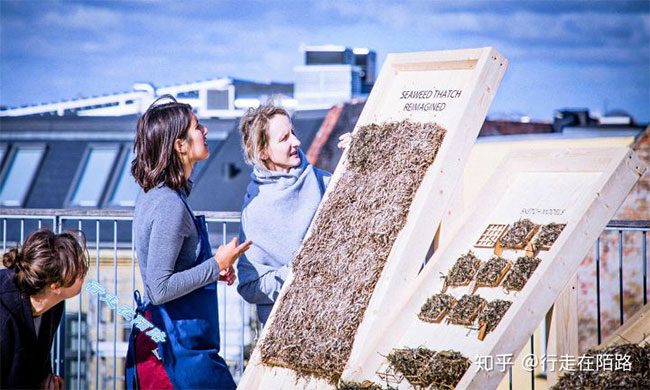
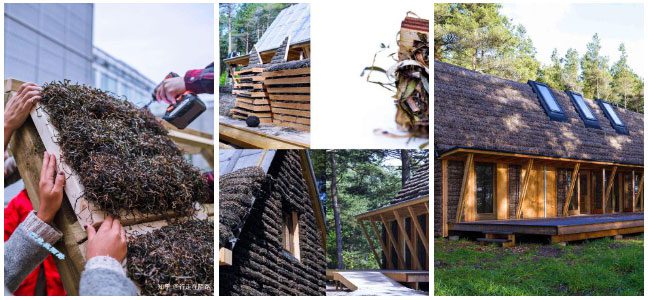
The advantage of this method is its low cost, providing protection from sunlight and moisture…
For example, in the modern version of the house made of seaweed, after completing the wooden structure, a waterproof membrane is placed on the sloped roof, and the collected and previously dried seaweed is bundled into circular strips that are secured onto the roof with ropes. This task can be performed by an adult male and takes about three days (not including harvesting and drying).
The advantages of this method include low cost, as it not only provides protection from sunlight, moisture, and insects but also makes the wooden roof structure more durable.
However, for traditional seaweed houses, builders must create 4 to 5 layers of insulation to reach a thickness of one meter. After that, the roof requires no maintenance. Even if the waterproof membrane gets punctured, the house will not leak, and those living in it for 300 years need not worry about pests, as the scent of seaweed repels most insects.


















































